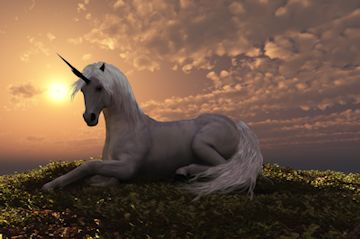Normal
0
MicrosoftInternetExplorer4
st1:*{behavior:url(#ieooui) }
/* Style Definitions */
table.MsoNormalTable
{mso-style-name:”Table Normal”;
mso-tstyle-rowband-size:0;
mso-tstyle-colband-size:0;
mso-style-noshow:yes;
mso-style-parent:””;
mso-padding-alt:0in 5.4pt 0in 5.4pt;
mso-para-margin:0in;
mso-para-margin-bottom:.0001pt;
mso-pagination:widow-orphan;
font-size:10.0pt;
font-family:”Times New Roman”;
mso-fareast-font-family:”Times New Roman”;}
There’s a Unicorn in My Bible
By Joel B.
If one picks up a King James Version of the Bible they might notice that it mentions a creature called an unicorn. Not just one time, but a total of six times. This may sound silly to some and others may even dismiss the Bible for suggesting that such a creature exists. Why? Because unicorns are thought to exist only in fairy tales. However, I would assert that the Bible is one hundred percent correct when mentioning this creature.
It is well said in 1 Cr 2:14 that the natural man cannot discern the things of God because they seem like foolishness to him and that he cannot know them since they are discerned only by God’s Spirit. This gives us an important clue in understanding the mystery of the unicorn. It must be discerned through God’s Spirit.
To discern this creature it is necessary to identify some key features of it. First, Num 23:22 tells us the unicorn is strong. It even compares it to God’s strength. Next, Psa 22:21 tells us it is dangerous. Third, Job 39:9-12 suggests it can’t be tamed. Finally,Ps 29:6 lets us know that the young of its kind can skip. This doesn’t sound like the mythical unicorn. They were thought to be tamable Even Pegasus, the horse-god of Greek mythology, was thought to have been tamed.
The final detail of solving the mystery of the unicorn is understanding the meaning of the name. It can mean one-horn or even suggest a beast with one prominent horn. When we put all these things together it sounds a lot like a rhino to me. In fact, the Indian rhino is a species of rhino that happens to have only one horn. Mystery solved!
Whether the Bible is speaking of the Indian rhino or another species of rhino we don’t really know. However, the point of all this is that the Bible doesn’t have mistakes, but things that cannot be discerned by the natural man without spiritual aid. This is a call to all Christians to know their Bible and to be patient with those who don’t understand.
 The Bottom Line, Ministries Christian News, Articles, & Poetry
The Bottom Line, Ministries Christian News, Articles, & Poetry 






An interesting insight on those verses mentioned concluding that of a creature that still is among us and not one that was thought to have become extinct or something thought to have been just in mythology. Check out the video of the baby rhino skipping alongside its mother.
Joel,
Good insight and fun facts in this post.
Great insights Joel. I am going to add this to my arsenal of evidence for the inspiration of the Bible.
John,
Unfortunately some of our modern bibles translate the Greek word “reem” to mean “wild ox” instead of “unicorn” or “rhino”. However, “reem” can certainly refer to a rhino. If you go to the Rhino Resource Center online, it refers to the Indian rhino as a “reem” or a “unicorn”.
http://www.rhinoresourcecenter.com/images/Buffon-1814_i1189165020.php
This animal was untamable, as can be seen in Job 39:9 – 12, where God asks Job “Will the unicorn be willing to serve thee, or abide by thy crib? Canst thou bind the unicorn with his band in the furrow? or will he harrow the valleys after thee? Wilt thou trust him, because his strength is great? or wilt thou leave thy labour to him? Wilt thou believe him, that he will bring home thy seed, and gather it into thy barn?”
This passage shows that the unicorn, whatever it was, could not be tamed at all, nor used in farming to plow the fields like an ox can. This, as well as other verses soon to be discussed, shows that many modern versions, like the NKJV, ESV, NIV, NASB and modern Catholic versions like the St. Joseph NAB and New Jerusalem bible are incorrect in their rendering of this word as “wild ox”. The wild ox is nothing more than a “wild guess” and pure speculation on the part of the modern bible editors. A wild ox is like a wild horse. It can be tamed, by castration or placing a yoke on its neck, and bind him with his band in the furrow to bring home thy seed. God’s question to Job is intended to produce a definite NO, not a ‘Yeah, I can do that.’
The fact is the modern bible translators do not know what this animal was, and many of them say that whatever it might have been, it is now extinct. Wild oxen still exist, and they can be tamed and domesticated. In fact some bibles like Darby’s, Rotherham’s 1902 Emphasized bible and the Spanish of 1960 translate this word as “buffalo”, while the Douay Rheims of 1610 read “unicorn” (Deut. 33:17) but the revised Douay-Rheims of 1821 and 1950 have “rhinoceros” (Deut. 33:17) but “unicorn” in some of the other verses. The 1950 Douay Version has “rhinoceros” in Numbers, Deuteronomy and Job, but “unicorn” in Psalm 22:21; 29:6; 92:10 and Isaiah 34:7. Young’s ‘literal’ translation shows that he simply did not know what the animal in question referred to, so he merely transliterated the Hebrew word, and did not translate it at all. His version consistently reads “the rheem” except in Psalm 22:21 where Young translated it – “Save me from the mouth of a lion: — And — from the horns of THE HIGH PLACES Thou hast answered me!”, while the Ferrar Fenton translation done in 1910 had “bulls”.
Let’s see now…unicorns, buffaloes, rhinoceros, rheem, the high places and bulls. Yep, all pretty much the same things, right? Whenever you hear the phrase “All scholars agree” you should know right away that the guy has no idea what he is talking about.
Whenever you hear the phrase “All scholars agree” you should know right away that the guy has no idea what he is talking about.
The Unicorn was a one horned animal of some kind. I don’t think we know for sure what it was, but it was not a wild ox as the NKJV, NASB, NIV have it. It could not be tamed (Job 39: 9, 10) and Psalm 92:10 is speaking of a one horned animal, while the “wild ox” of the NKJV, NIV, NASB has two horns; not just one.
In the original 1611 edition of the KJB, the editors placed “or Rhinoceros” in the margin of Isaiah 34:7 where it reads: “And the unicorns shall come down with them.” It is still in the modern editions of the KJB. So the KJB editors were not ignorant of the possibility of the unicorn being a rhinoceros.